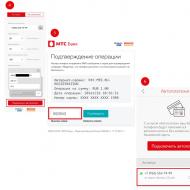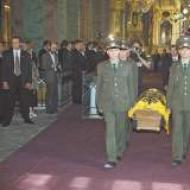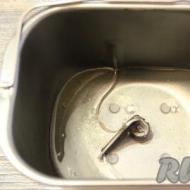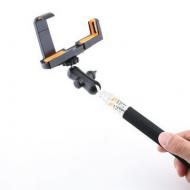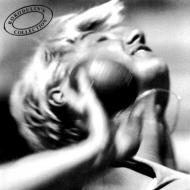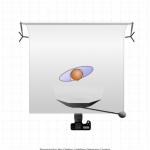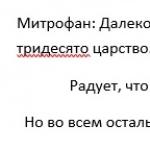
Splicing on the VAZ - what is it and how to do it? Do-it-yourself splicing: how to do it? Stampings
unwelding(splashes) - these are wheel disks of increased width, made (usually with their own hands) from ordinary stamped disks, by welding two wide rim shelves taken from two disks to each other. Or by welding on an expanding insert. In order to install wider tires.
Materials and tools for making splices:
2 rims (for the manufacture of each splicing);
Bulgarian;
Welding machine;
Seam sealant (required only when installing tubeless tires);
Paint for painting.
Manufacturing process
We take 2 stamped disks and cut through the 2 disks (see the figure below) with a grinder along the red line, cutting off the outer rim and throwing it away.
1 disk has only an incision along the red line of the outer rim to the inner part of the disk a little closer to the middle, having disconnected the outer rim, we throw it away.
At disc 2, we remove unnecessary remnants with a grinder.
We put the rest of the disk 1 on the hub rear axle, fix with nuts and put on the second part.
We align the second rim with respect to the first, eliminate the runout, grab it by welding at four points at the junction.
The places of penetration are marked in green.
Photo report on the production of splices



For a tubeless setup, we just need to seal the seam in the middle of the disc. This is definitely worth doing before painting. For this purpose, 3M Seam Sealant is suitable for us. Alternatively, it can be diluted with a degreaser.
Attention! It is a degreaser, not a solvent or, God forbid, white spirit! Diluted sealant to smear the seams. Wait until it gets up, remove the excess (chisel, sandpaper, etc.), and paint, so as not to rust and please with the appearance.

The splices themselves are mostly painted with orange paint.
Homemade splices installed on a 1988 BMW 3 Series.
It's no secret that every motorist tries to make his car bright and eye-catching. One of the ways is to unweld the disk with your own hands. Everyone will be able to cope with this matter if he knows the specifics of the operation and its purpose.

The beat is evaluated again in two ways. It is possible by eye, but in this case it will be possible to evaluate only the fact of the presence of a beat. It can be done with a ruler. The value of the beat is measured - for which the ruler is applied both horizontally and vertically. If at the same time the beating does not exceed 1-2 mm, then it is considered that it is normal. If the runout exceeds 2 mm in any of the planes, it is recommended to correct the “stamping” using special equipment.
The “stamping” that is the most even is used as the basis. It is recommended to mark it immediately so that there is no confusion later. As for the second "stamping", it will become a rim.
We are starting the second stage of work. Compartments grinder outer rim from the second "stamping". We cut the main one in the area of the outer rim to the inside, preferably closer to the middle. After that, the rim is removed and thrown out. He is no longer needed. As a result, the following picture is obtained: only the inner rim remains from the second “stamping”, which becomes the outer one on the base stamping.
We put the stamping base on the hub of the rear axle, fix it with nuts and then put on what is left of the second disk. Align the second rim with respect to the first, eliminate the beating. By welding we grab in several places where the cuts were made.
Now the seam sealant is taken and applied to the center of the boiled disk. This is done, of course, before painting. We wait until the sealant hardens and remove the excess with sandpaper or a chisel. Then painting.
The second way to weld discs
Now about how to make unwelding discs using the second method. It is slightly different from the first one. In this case, one "stamping" is sawn into two parts. After that, a metal strip is welded into the middle. This method is more economical than the first, because you only need one set.
A metal strip 3 mm thick must be cut off evenly and its width must be selected in advance. Then the strip must be bent with special rollers. The part of the disk that remains with the hub is tacked by welding together with a metal strip.

After that, the second half of the disk is also tacked from the side of the metal strip. All seams are thoroughly welded so that the disk does not suddenly lead. If it is possible to carry out automatic welding of a rotating part, then this is better. Thus, the boiled disk will become noticeably stronger.
Now you need to clean the seams, preferably on lathe. It is still advisable to roll the wheels before painting in order to be sure of their correct geometry.
Final stage - . It is best to paint with a powder composition. On the side where the disk is hidden from view, it is better to carry out an additional welding seam for reinforcement. The disk is ready and assembled without a chamber and holds pressure very well. If, nevertheless, a camera is installed, then a hole is drilled in the disc for the nipple using a drill. First, drill with a small drill (size 4/5 will do), and then the hole is enlarged to right size.
It is better to entrust the rolling of discs, which is mandatory, because this method checks the resistance of the disc to loads and the quality of the seam, to specialists.
Some motorists are still varnished to look even cooler. Here, as everyone wishes. Everything here will depend on individual preferences. We hope that the article will be useful and will allow you to unwrap disks with your own hands without any problems.
Tuning is very common among motorists rims- the so-called production of splicing. It consists in the following: the width of the disks increases in order to be able to use wider tires. In fact, this method can be considered artisanal, but it is widely used among craftsmen.
Among its advantages are the following factors:
- improving the adhesion of the wheel to the road, thereby increasing the driving performance of the car;
- low cost of such disks;
- giving the car a more stylish appearance;
- the opportunity to make splicing with your own hands.
 Benefits of auto splicing
Benefits of auto splicing However, before making splicing, it is necessary to take into account that they also have disadvantages:
- increase in wheel moment of inertia due to changes in mass and size;
- the need to use non-standard rubber;
- reduction in the strength of the wheel structure due to the presence of welds;
- deterioration in vehicle handling due to the use of wheels with modified characteristics;
- the need to use tires of non-standard sizes.
If all this did not convince you of the need to operate regular products of the automotive industry, let's look at how you can make splicing yourself at home. Let's do this using the example of an r13 wheel for a VAZ car - this example can be considered universal.
 Disadvantages of using splices
Disadvantages of using splices Training
At the initial stage, you need to fully understand the whole course of the process. You should know that stamped wheels for a car serve as the starting material for manufacturing. Cast products will not work, because welding will be carried out in the process - cast products do not tolerate thermal loads.
The rim width of the discs can be increased in 2 ways:
- a steel plate is welded into the middle;
- from two ordinary disks, cut in half, one wide one is welded.
You should estimate what width of disks the design of your car allows. For VAZ vehicles, a width of 7j is usually chosen. But if you cut or roll out the wheel arches, then you can bring the width up to 10 j. So, first we need to calculate the width of the rim that we want to get.
If we decide to use the method of welding two disks, we need to take this into account and stock up on the required number of them - 2 disks will be needed for each splicing.
Step one: cut and cook
First, you will have to perform metal cutting and welding - to perform these works, you will need the appropriate equipment, as well as skills in handling it. So, we stocked up with the right amount of disks, a grinder and a welding machine - now we can get to work. The step by step process of welding 2 discs is as follows:
- Cut off the rim outside the first wheel with a grinder.
- Cut off the rim outside the second wheel.
- We install the first disk on the rear axle hub and fasten it.
- We put on the second part and perform alignment, eliminating the beating.
- We fix the contact at four points by welding.
- We weld the seam around the entire circumference - this is necessary in order to provide the necessary structural strength.
- Using a grinder, we clean the welding seam from the outside and inside. It should be remembered that the balancing of the wheel will depend on the quality of the stripping.
 Production of splices
Production of splices If we weld a steel strip inside, the process will look similar, but some details will differ:
- Cut off the outer rim to the inside of the wheel.
- We cut the steel strip of the desired size and bend it around the circumference - for this it is best to use rollers. They provide the required accuracy.
- We install the disk on the hub and fix the steel strip on it by welding.
- We weld the outer rim onto the strip so that deformation does not occur.
Stage two: sealing
Now we need to seal the resulting blanks so that we can put rubber on them. Sealing is especially important if we plan to do without installing a camera. If we put the camera, then sealing is optional, but the weld must be smooth and exclude the possibility of damage to the camera.

Final step: painting
And the last step is painting. However, before this stage, you need to check the splices for runout and roll them. After making sure that everything is in order, you can think about painting.
Once you have chosen the right enamel, apply it in the following way:
- Carefully grind the surface of the product.
- Degrease with white spirit.
- Apply a layer of primer - it will fill all the micro-roughnesses and increase adhesion, provide better adhesion of the paint to the metal.
- After the primer dries, apply enamel in several layers.
- When the paint dries, it is advisable to varnish it - such a coating will be more durable and aesthetic.
 Painting finished splices
Painting finished splices Conclusion
Self-manufacturing of splicing is a rather responsible process. It looks simple, but its implementation requires certain skills and specialized equipment. It is very important to control the correct execution of all points and to ensure that the resulting splicing does not give a beat.
Good day! Car tuning is a multifaceted and versatile procedure, ranging from serious technical improvements to the engine and suspension, ending with the simplest visual changes. Today's topic of conversation will be the splicing of discs.
Not everyone knows what it is, why they do splicing and what result it can eventually lead to.
This type of tuning is aimed at motorists who are not satisfied with the standard appearance their car, they want to do something really unusual. I can say that unwelding can be done with your own hands. The production itself is carried out in 2 main ways. But first I want to answer other questions. The main one is this - is it worth putting boiled rims on your car.
When did such tuning appear
In cities such as Moscow, St. Petersburg, Minsk or Kyiv, you can meet a fairly large number of car owners whose cars are equipped with boiled discs.
Although many consider this the prerogative of purely sports cars, unwelding is put on the Gazelle, UAZ cars without any problems. Even for Oka, such tuning is not prohibited.
If you look into the history of autotuning in Russia, then here are the first samples of cars with welded rims appeared around the middle of the 70s of the last 20th century. Cars that took part in all kinds of competitions and competitions drove with such wheels. In fact, the splicing installation gave them a certain advantage when driving, since the car could have wider tires.
Most often, unwelding is done by fans of this type of competition on cars like drifting or drifting.
This is due to the fact that the modified disks provided better maneuverability and reliability while keeping the car on the track.

Popularization of tuning grew rapidly. Similar solutions can be found on many cars.
Some of the popular cars on which you can find welded discs include:
- Nissan 350Z;
- Nissan 370Z;
- Toyota Mark 2;
- Toyota Chaser;
- Nissan Skyline;
- Mitsubishi Lancer;
- Honda S2000;
- Honda Civic;
- Ford Mustang;
- Dodge Charger, etc.
But the list is not limited to these cars.
The most important thing is to understand what it is, why unwelding is needed and whether it is even worth using it on your own vehicle.

Methods and types of welding
There are currently no problems with and install the necessary kit on own car. The price of products depends on a number of factors.
But what do you say that some of the two discs make just one? That is, in fact, to equip a car with 4 wheels, you will need to buy 4 disks. This is what is called splintering. Although objectively this is not the only way. The essence of the procedure is to increase the width of the stamped disk for vehicle. But in the case of cast products, such a focus will not work. Craftsmen and ordinary garage craftsmen work with stamped car tires. The production itself is independent and factory.
In the case of factory production, specialists simply make initially wider wheels. They differ in that they are very expensive, and the circulation itself is limited.
For the owner of an inexpensive car, buying a factory kit is probably not an option. Objectively, it is very expensive, and only a few are willing to spend money on it.

That is why they go the other way. Namely, they do the welding with their own hands. But how to make one product suitable for installation on a car from two disks?
Actually there are 2 ways.
- The first option is simple, but the most expensive in terms of price. Here you need to take 2 disks, weld them together. It is extremely important to make an incision in a strictly defined place. The high cost is due to the need to purchase 2 sets of products at once to equip 4 wheels of the machine;
- The second method is cheaper, but harder to implement. Here you will need to use an additional strip of metal. It is cut out and rounded. One disk is cut in half, and a strip of metal is welded between these halves. The advantage of the method is that there are virtually no restrictions on the width of the created splicing.
To what extent it is expedient and necessary, judge for yourself. You can find a lot of videos on the net about how it is done and how it looks like in the end. The main thing is to be real for the received sizes.
In some cases, in order to install a boiled disc, you will also have to cut the wheel arch on the car.
Advantages and disadvantages
And now, as for me, the most important thing. I want to objectively look at the pros and cons of this type of tuning.
Of the advantages, only 2 points stand out. This is a spectacular and unusual appearance, as well as the ability to provide better stability and stability for cars that participate in drifting competitions. But mostly unwelding is used for exhibition cars that are not intended for everyday use.

But there are more disadvantages. Moreover, many disadvantages directly affect the characteristics, performance and durability of the machine:
- it is sometimes very difficult to find tires with the right parameters;
- too narrow tires at any time can simply jump off the disk;
- such structures are difficult to install;
- pumping up tires on boiled rims is really only explosion methods;
- cars with such disks will not pass technical inspection;
- increased attention from traffic police and traffic police officers to cars with splicing;
- it is easy to get a fine for splicing;
- there is a high chance that the car will be taken to the impound.
As for me, there is absolutely no practical sense in unwelding. Yes, it is beautiful and visually spectacular. But no more.
Supporters self-tuning wheels are rarely left unattended, since it is quite simple to do the splicing of disks with your own hands, and the effect is amazing. Even a nondescript or outdated model in the last century begins to look more solid, modern and expressive.
And it will certainly stand out among the standard representatives model range. For those who have never been engaged in such a refinement of the appearance of their car, we explain: unwelding is an increase in the width of the disk.
Most often, it is made external to make a kind of ledge shelf. However, there are options when they resort to sinking, in which the inside of the disk goes inward, as if under the bottom of the car. And the most original enthusiasts sometimes boil the disc in both directions. In any case, the overall impression of the car and its appearance change greatly, and for the better.
How to make do-it-yourself disk splicing? The people came up with 2 ways. The first is more expensive, since 2 disks will need to be used for each wheel. The second is more economical, but more time consuming, since it is necessary to carry out more manipulations with the wheels of the car.

Disk preparation
Ideally, of course, it is better to take new disks for unwelding. But few people go for it, so used ones are used. It is clear that their condition may not be brilliant. Therefore, first you need to check them for evenness. To assess the condition, the disk is put on the drive axle of the machine (do not neglect safety measures, put saw cuts or bricks under the car) and 1st gear is engaged. The runout - if present - is measured both horizontally and vertically. Up to 2 mm, they can be neglected, if the parameter is exceeded, the disks will have to be rolled.
For the base, stamping with the best performance is noted; the second will act as a rim.
Another point: the width of the unwelding. Too wide discs will require additional operations: rolling, trimming the arches for the wheels, and often the installation of special expanders. The most harmonious will be the splicing of a 13-inch disk by a maximum of 7 inches.

The first way of unpacking
As already mentioned, 2 discs are required for each wheel.- From the second, rim disk, the outer rim is cut off by a grinder or a lathe;
- The base is cut along the outer rim to the inside. Usually the line runs closer to the middle;
- The base is put on the corresponding hub and fastened with native nuts;
- A rim is put on it, which is aligned with the first disk. The transmission starts again, the beat is measured and eliminated;
- In several places where two parts meet (at least 4), they are tacked by welding;
- The seam must be smoothed out without fail - both for reliability and for the future integrity of the slopes. Is taken Seam sealer 3M and is getting a little divorced. For this, only a degreaser is used, no solvents or, especially white spirit. The seams are generously smeared; after drying, they are cleaned with sandpaper, needle files and other things that are at hand.

Method two, economical
For it, only a disk is required for a wheel, and besides it, a strip of steel of the required width and length (it is equal to the circumference of the disk) from a sheet 3 mm thick.
- The disc is sawn along the circumference into 2 parts;
- The strip is bent into a ring of the desired diameter and welded. You can bend by any means, although top scores gives the use of a special roller;
- The ring is welded first to the part on which the hub remains. She will also set the desired direction for mounting the second half of the disk;
- The rest is taken. The baited welding is checked for beating, if everything is in order, the seams are completely welded;
- Both seams are carefully sanded. It would be ideal - a lathe: manual cleaning will certainly leave burrs. Rolling and painting, as in the first version, remain unchanged. Please note that if the tires are tubeless, then no additional action is required. However, for old slopes, it will be necessary to drill a hole in the disk for the nipple before you do the welding of the disks with your own hands.

